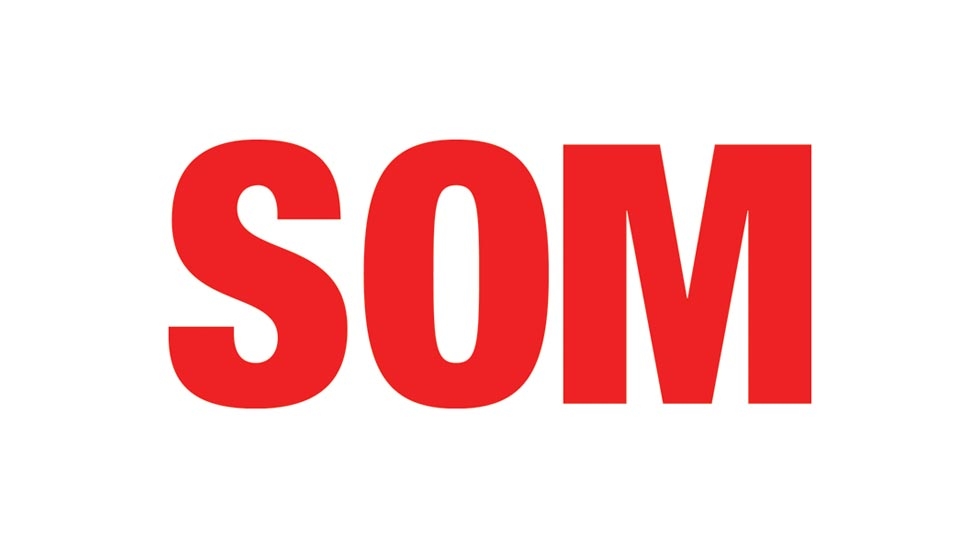Pavlo Kryvozub is winner of the 2012 SOM Prize. The recent graduate of the University of Cincinnati (MArch., June 2012) will use the $50,000 award to facilitate travel in Europe and Asia pursuing research on his topic, “Synthesis of Art & Architecture.” Kryvozub says, “The synthesis of the arts within the field of architecture has a long tradition which spans throughout human history…I would like to look for the continuity of development and interaction of architecture with other arts in both historical and contemporary contexts.”
The 2012 SOM Travel/Research Fellowship, which comes with a stipend of $20,000, is awarded to Annie Stone, who received a BArch. from the University of Tennessee this past May. Stone’s topic is “CISTERCIAN—an analysis of sight(e)”—a proposal to develop a critical methodology for approaching sight within a given frame of reference to “expand beyond the immediacy and exactitude of the camera’s eye, to capture a meaningful essence.”
Submissions for the SOM Prize were received from students at 34 schools in the U.S. The jury of Chicago-based architects included Ronald Krueck, FAIA, Krueck & Sexton Architects; John Ronan, AIA, John Ronan Architects; and Brian Lee, FAIA, Partner, Skidmore, Owings & Merrill LLP (SOM)—who served as jury chair.
Margaret Wildnauer is winner of the $10,000 2012 Structural Engineering Travel Fellowship for her proposal, “The Fourth E.” Her research will build on Dr. David Billington’s seminal description of the defining characteristics of structural art as “efficiency, economy and elegance.” Wildnauer writes, “As environmental concerns become more prominent, a central priority in the mind of structural engineers and designers should be sustainability and therefore, ‘environment’ must be added as a fourth criterion for a successful structure.”
San Francisco-based professionals comprised the structural jury: Tom Buresh, University of California, Berkeley; Richard M. Kunnath, PE, Pankow Builders, Pasadena; Marsha Maytum, Leddy, Maytum, Stacy Architects, San Francisco; Mark Saunders, Rutherford & Chekene, San Francisco; and SOM Structural Engineering Director Mark Sarkisian—who chaired the group. +
Related Stories
| Dec 28, 2014
The future of airport terminal design: destination status, five-star amenities, stress-free travel
Taking a cue from the hospitality industry, airport executives are seeking to make their facilities feel more like destinations, writes HOK's Richard Gammon.
| Dec 28, 2014
10 key design interventions for a healthier, happier, and more productive workplace
Numerous studies and mountains of evidence confirm what common sense has long suggested: healthy, happier workers are more productive, more likely to collaborate with colleagues, and more likely to innovate in ways that benefit the bottom line, writes Gensler's Kirsten Ritchie.
| Dec 28, 2014
7 fresh retail design strategies
Generic ‘boxes’ and indifferent service won’t cut it with today’s savvy shoppers. Retailers are seeking a technology-rich-but-handmade vibe, plus greater speed to market and adaptability.
| Dec 28, 2014
Workplace design trends: Make way for the Millennials
Driven by changing work styles, mobile technology, and the growing presence of Millennials, today’s workplaces are changing, mostly for the better. We examine the top office design trends.
| Dec 28, 2014
AIA: Commercial glass façade and door systems
When it comes to selecting fenestration systems—particularly glass facades and door systems—a number of factors come into play, requiring a thorough evaluation of a project’s individual requirements.
| Dec 28, 2014
10 essential habits of successful architects
Want to take the next step as a design processional? John Gresko, Senior Project Architect with HDR, explores the traits that many great architects possess.
| Dec 28, 2014
10 unglamorous things architects do
An acquaintance recently asked me about the kinds of things I did on a day-to-day basis at work, anticipating a response loaded with enviable activities. She was wrong, writes HDR's John Gresko.
| Dec 28, 2014
New trends in ceiling designs and materials [AIA course]
A broad array of new and improved ceiling products offers designers everything from superior acoustics and closed-loop, recycled content to eased integration with lighting systems, HVAC diffusers, fire sprinkler heads, and other overhead problems. This course describes how Building Teams are exploring ways to go beyond the treatment of ceilings as white, monolithic planes.
| Dec 27, 2014
7 ways to enhance workplace mobility
The open work environment has allowed owners to house more employees in smaller spaces, minimizing the required real estate and capital costs. But, what about all of their wireless devices?
| Dec 27, 2014
'Core-first' construction technique cuts costs, saves time on NYC high-rise project
When Plaza Construction first introduced the concept of "core first" in managing the construction of a major office building, the procedure of pouring concrete prior to erecting a steel frame had never been done in New York City.

















